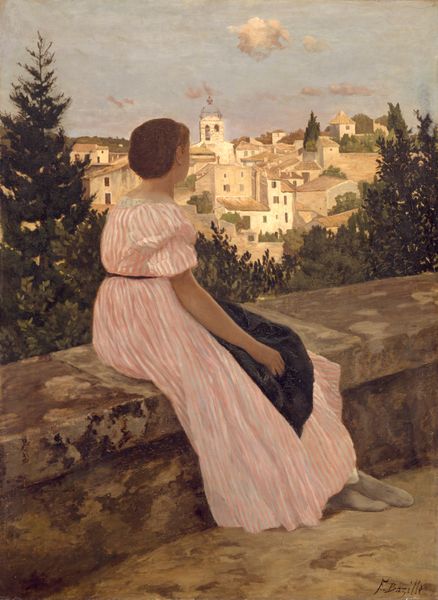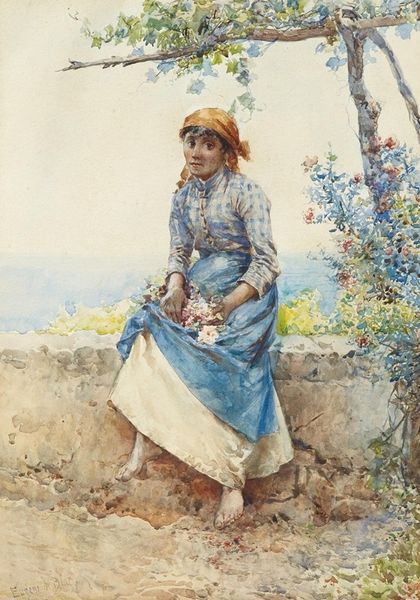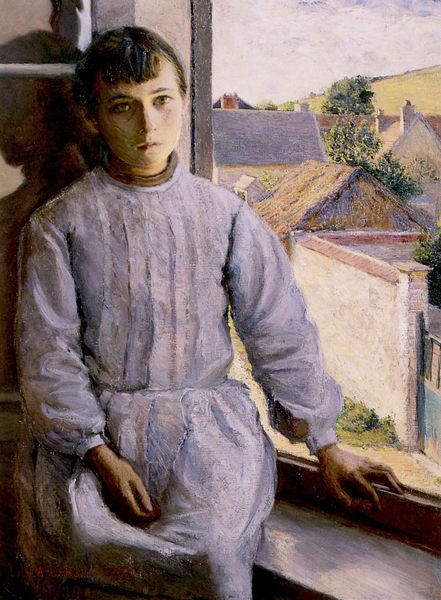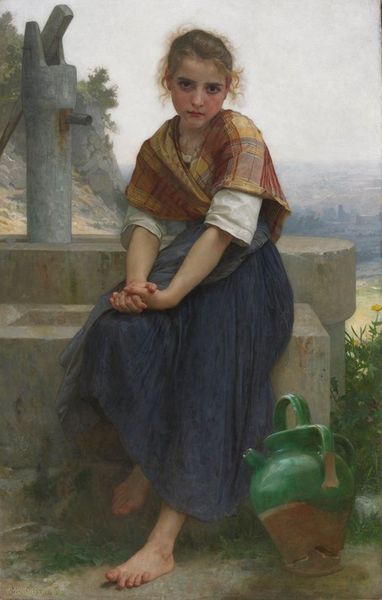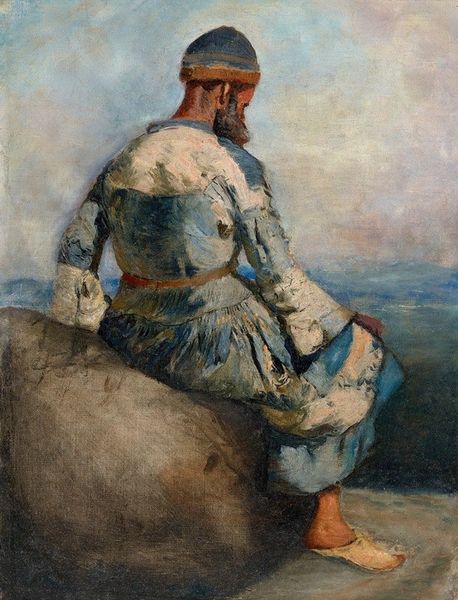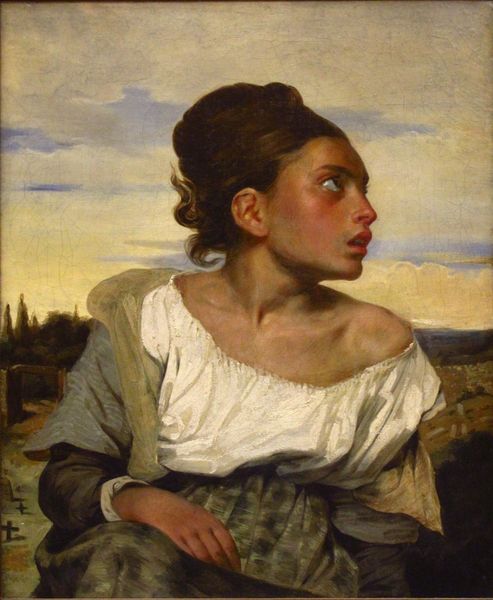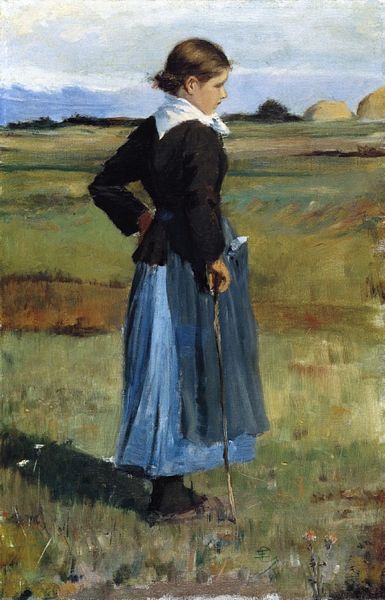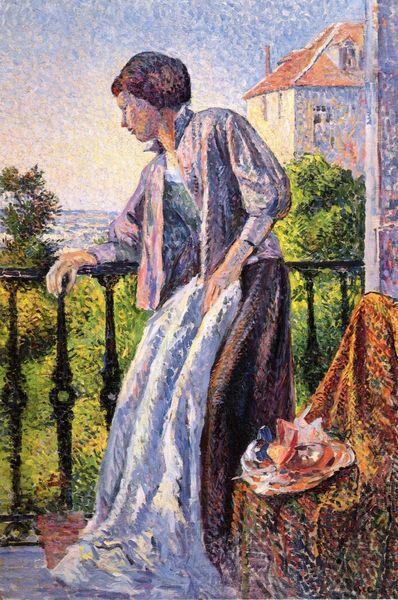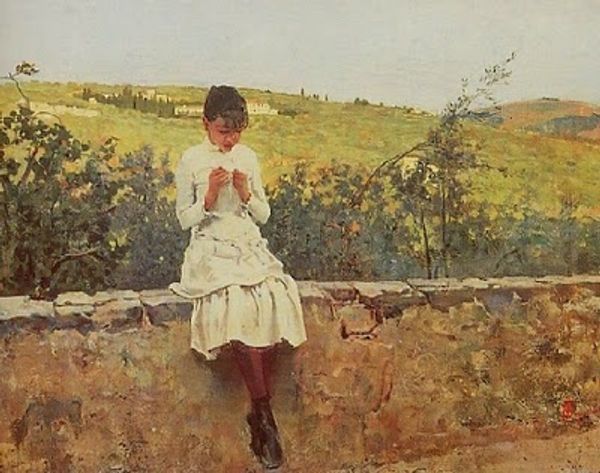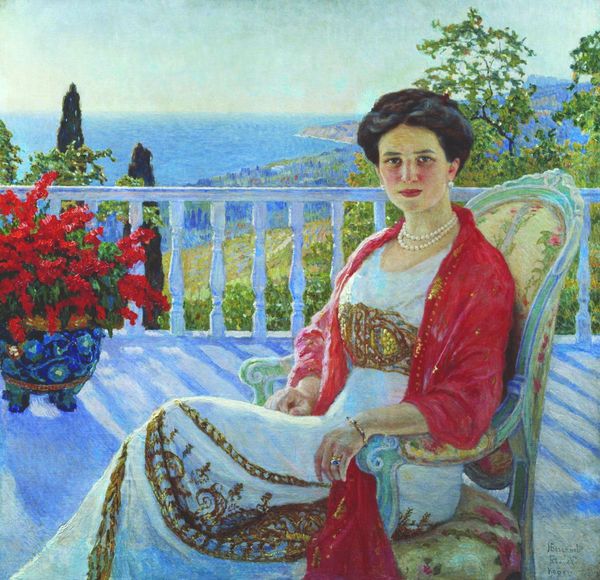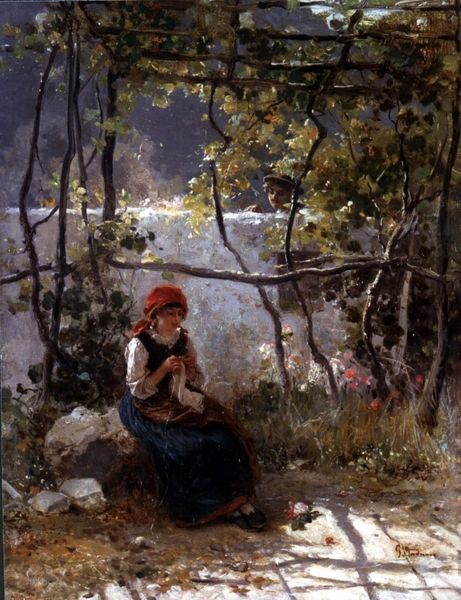
painting, plein-air, oil-paint
#
portrait
#
painting
#
impressionism
#
plein-air
#
oil-paint
#
landscape
#
figuration
#
oil painting
Dimensions: 130 x 89 cm
Copyright: Public domain
Editor: So, here we have Frédéric Bazille's "View of the Village of Castelnau-le-Lez," painted in 1868. I'm struck by the juxtaposition of the young woman in the foreground against the sprawling village in the background. It feels very staged, almost like a portrait within a landscape. How do you interpret this work? Curator: This piece sits at a fascinating intersection. We see Bazille grappling with the established conventions of portraiture, while simultaneously engaging with the burgeoning Impressionist movement through its plein-air execution. It's not just a portrait "within" a landscape, but a deliberate placement of a Bourgeois woman, marked by her finery and leisure, within the landscape of Southern France. How does that tension strike you, the contrast of social class and geographical location? Editor: That makes me think about who had access to these leisurely country escapes. So it becomes more than just a pretty scene. Curator: Exactly! Consider also Bazille’s own privileged background. He's not just painting what he sees, but also reflecting the socio-economic realities of his time. The female subject is posed in the shade looking at us; however, the background landscape and the positionality of Bazille and his subject tell a different story, an interesting class narrative, wouldn’t you agree? What does the young lady *see* beyond her vantage point, and what are we invited to contemplate by looking at *her* looking? Editor: It’s almost like she’s a gatekeeper, filtering our view. So Bazille uses her presence to guide our interpretation of the landscape and social commentary. Curator: Precisely. It challenges us to think critically about who is represented, how they are represented, and what that representation tells us about power dynamics of 19th-century France. We have to look at what this artwork does. It’s not merely passive observation; it's active construction. Editor: I never thought about landscape paintings in that way, as constructs loaded with social meaning. Thanks for expanding my perspective! Curator: And thank you for noticing the nuances in Bazille’s work. Recognizing art as a dialogue allows for transformative readings.
Comments
No comments
Be the first to comment and join the conversation on the ultimate creative platform.
